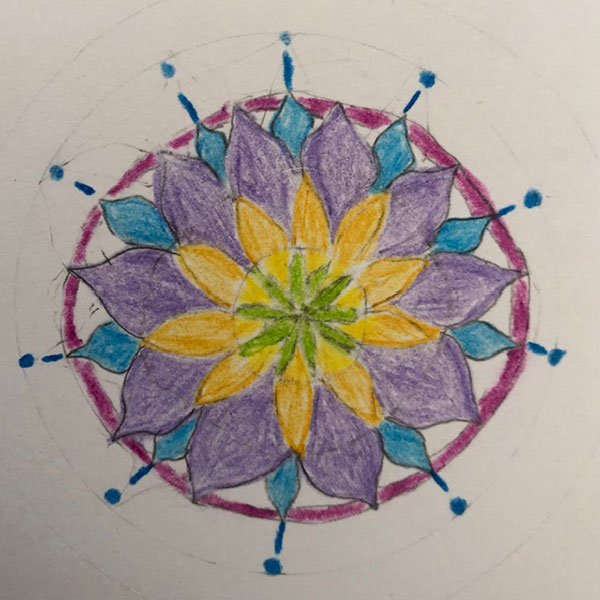 I was watching the clouds this morning lying on a dock hearing the gentle waves wash over the rocks below. Occasionally, the dock would rock, creek or moan from the motion. The clouds were not moving as I watched them but if I looked away and then back they had moved apart and reconfigured. This happened over and over again. This apparent non-movement which is actually very dynamic.
I was watching the clouds this morning lying on a dock hearing the gentle waves wash over the rocks below. Occasionally, the dock would rock, creek or moan from the motion. The clouds were not moving as I watched them but if I looked away and then back they had moved apart and reconfigured. This happened over and over again. This apparent non-movement which is actually very dynamic.
I think about this as I begin to unwind from the huge project I undertook to recreate a Wellness Weekend for women here on the shore. The configurations of so many moving parts that came together and then dissipated into what will be next. A new configuration like the clouds.
I know I won’t be a leader of this again. I am not sure if I will have a role in it at all. I am a cloud looking for my next cluster yet also not moving and in continuous motion all at once.
It is the last part of my life. This is the most different phase yet! This week in the middle of the night I imagine being buried next to my mother and I cry. I wake up in the morning my hands still covering my damp face. My mother is buried alone. My father remarried and moved his designated spot to be next to his new wife. I had a difficult relationship with my mother and yet something is shifting — healing. I’ve looked for so many ways to replace her and may be finding myself out of options. Failed female friendships. So many activities and big events, big classes, continuous clients. I may just need her.
Someone I know did a journey recently and heard in from her mother. Dead a long time and neglectful and abusive during her life she was very present and loving in the afterlife and available to her daughter.
I wonder about my mother. I have only heard from her once. I begged her to tell me how she could leave me when I had just turned 15. Her answer, “it had nothing to do with you”. I understood this to mean that she was on her own life trajectory and it just happened to intersect with mine. I feel something different now. I was her only child, her only daughter and I am beginning to feel how much she loved me — intensely.
I did my own journey last year and remembered and retold, to those supporting me, my whole life with her. She was always sick and notably left me with my grandmother for a whole summer and went to a mental facility when I was only 5. In the retelling of this experience my 5 year old never forgave her for leaving me. I may have been the one that turned away from her.
I am reconsidering a mother’s love as I give so much love myself to my family and clients. The ‘holding environment’ that I never quite feel. The way I compensate by doing so much to try to fill that space.
Now I am allowing the space, the discomfort of not knowing what is next, or if there is a next, and the first thing that happens is my mother comes in. She invites me to be next to her in the empty plot at the cemetery and I consider this and how it feels.
I’ve tried so hard to belong as a step mother to my husband’s family. I’ve tried so hard to not be Jewish and fit in. Yet this longing/belonging I feel to be next to mother in a Jewish cemetery in Northern Virginia is calling me.
In sessions I’ve been talking a lot about orphan feelings. Those feelings we ‘orphan’ in favor of other feelings. We may orphan sadness in favor of anger or anger instead of fear. I imagine those feelings shut up in some prison, not orphanage. It is dark, dank with no attendants what so ever. When we feel those orphan feelings together my clients feel an immediate relief and calm settles over them.
When my mother died I do not remember feeling grief. I remember feeling shock. I remember being preoccupied with whether a boy I had a crush on would come to the funeral. When I was separated from my husband and living in California in my early 40’s I found the book Motherless Daughters by Hope Edelman. I was in a bookstore in Monterrey and the book seemed to jump off the shelf into my hands. I read it and cried. I felt connected to a community of women who had lost their mothers for the first time. There was support for my grief. I called a therapist — a resource in the back of the book and saw her in Berkley. We did this new thing, EMDR. It was the early 90’s. I remember her frustration as I continually wanted to talk and she continually asked me to feel my feelings. After that I looked for rituals. I went to the top of a mountain and burned some things to let go of her. I wanted to get over it.
Recently walking in the woods with a new friend, we shared some of our childhood stories. I told her how my mother had died when I was 15 and she turned to me with so much empathy and care as she said she was sorry. I noticed I disappeared in that moment. I was not there to feel her kindness and acknowledgment of this big thing that happened in my life.
Now I am feeling sad, even sorrowful, some regret and curiosity. As I follow these feelings with perhaps more capacity I wonder what will configure next. I notice I do not feel my usual anxiousness to start something new, to push into some new configuration. I am letting go into what feels like stillness but I know is continuous movement. And I feel some relief and calmness.
And then this poem found me this morning:
“You are the peace after wars
You are the calm after storms
And everything insanely beautiful
That shapes after tragedy.”
— from yesterday I was the moon by Noor Unnahar



